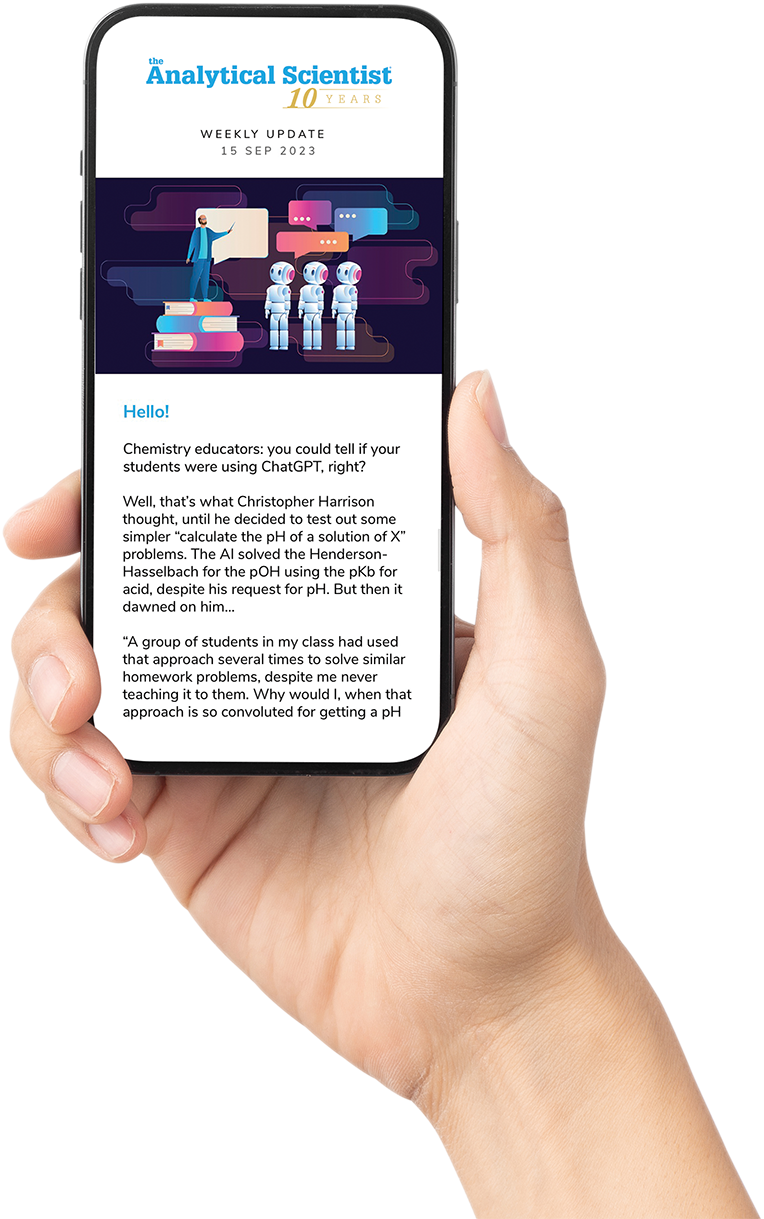
8 – Veloci BioPharma Analyzer
Fast, column-free molecular fingerprinting for biopharma analysis
Produced by HORIBA
The Veloci BioPharma Analyzer is based on a fluorescence spectroscopy technique that involves the simultaneous acquisition of absorbance, transmittance, and fluorescence excitation emission matrix (A-TEEM) spectra in a single measurement. The team calls this new molecular fingerprinting technique A-TEEM spectroscopy, which enables rapid, real-time, high-resolution analysis – without the need for traditional column-based methods. The system supports real-time quality control and process monitoring, providing reliable molecular insights to improve efficiency and consistency across biopharmaceutical workflows.
What the judges say…
“Smart technique in PAT.”
Insights from global product line manager Cary Davies
Please introduce yourself and your role
My name is Cary Davies and I am the global product line manager for Fluorescence products at HORIBA Instruments Incorporated. My primary role is the development of our newest fluorescence spectroscopy and fluorescence microscopy instrumentation, as well as ensuring the highest level of global support for our thousands of customers around the world.
What inspired or sparked the idea behind this innovation?
We invented a new fluorescence and absorbance spectrometer called the Aqualog that offers unique value for environmental water researchers studying dissolved organic matter in water. This patented instrument does things that no other spectrofluorometer can do, and we started working with a new customer at a very large pharmaceutical company who wanted to determine if this unique technology could be applied to solve a particular challenge with biological samples. Fluorescence is a highly sensitive and selective spectroscopic technique that is a very powerful tool used in biophysical research of biologicals. In the past, fluorescence was not typically used for substance classification or molecular fingerprinting. Our invention allows fluorescence to be used simultaneously for both molecular fingerprinting and quantification. Our new pharmaceutical customer was looking to see if this new technology could be successfully applied as an analytical and QA/QC tool in biopharma.
What was the biggest hurdle you faced during development and how did you overcome it?
The pharmaceutical industry has adopted long-standing, traditional methods for analysis, like high-performance liquid chromatography (HPLC), in the absence of better techniques. It is accurate and has deeply penetrated the biopharma industry, with a network of third-party labs able to perform the analysis. But HPLC is also problematic. Researchers must create columns for separations for each sample, and they can take weeks to generate data, and solvents are used that are costly and not sustainable. HPLC and other chromatographic methods are slow, usually performed offsite by third-party labs, often take a month to get results, require non-green chemicals, and are costly to execute. With thousands of samples to analyze, this becomes a bottleneck in pharmaceutical development. Any methods to improve the flow of sample analysis could benefit the industry by making the process faster, less costly, and more sustainable.
We overcame this hurdle by hiring new staff with the skills and background necessary to meet these challenges and developed completely new software that could easily be used in an industrial environment while providing the compliance and process connectivity features required in this industry.
The result was the introduction of our new Veloci Biopharma Analyzer utilizing a new fluorescence spectroscopy technique that is highly sensitive, compliant with current government regulations, and has the sensitivity to achieve the analyses required by the pharmaceutical industry. This fluorescence spectroscopy technique involves the simultaneous acquisition of Absorbance, Transmittance, and fluorescence Excitation Emission Matrix (A-TEEM) spectra in a single measurement. We call this new molecular fingerprinting technique, A-TEEM spectroscopy.
Was there a defining breakthrough or “eureka” moment that changed the course of the project?
The biggest “eureka” moment was our first pharmaceutical customer receiving FDA approval to implement this new tool as part of a drug packaging validation process.
What impact could your innovation have?
We believe that this innovation will allow the biopharmaceutical industry to develop new, faster and less expensive solutions in their drug production and/or validation processes. The impact could be significant, as it has the potential to provide a quick molecular fingerprint with a fundamentally simple optical technique without any sample handling requirements.
Did you collaborate with any external teams or partners?
We collaborated, and continue to collaborate, with several key opinion leaders and pharmaceutical partners who were invaluable in helping us to understand the needs of the market and in the development of this new product.
What lessons about innovation – from this project or your career more broadly – would you like to share?
Innovation coupled with implementation of the innovation is one of the most satisfying experiences you can have in life. Our instruments have been used by many Nobel Laureates around the world who have been recognized for their pioneering research that advances life on earth. As an equipment manufacturer, we hope that our new technology innovations can lead to more scientific breakthroughs and better sustainability.
Do you find yourself driven more by scientific curiosity or the desire to make an impact?
I would say that my scientific curiosity is driven by a desire to make a positive impact.
What’s next for your team – or for this innovation?
Next for this innovation are new process solution tools that we are working on, to ensure that the benefits of fluorescence can go beyond validation to in-line process.




